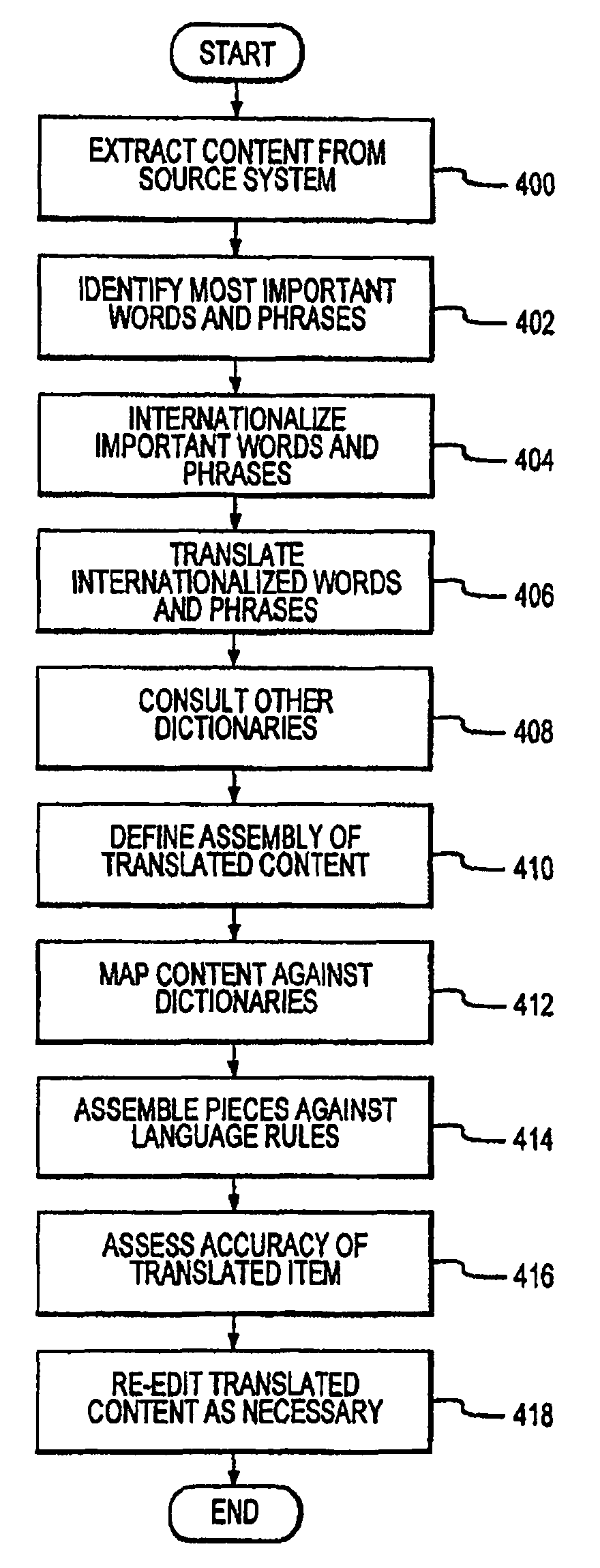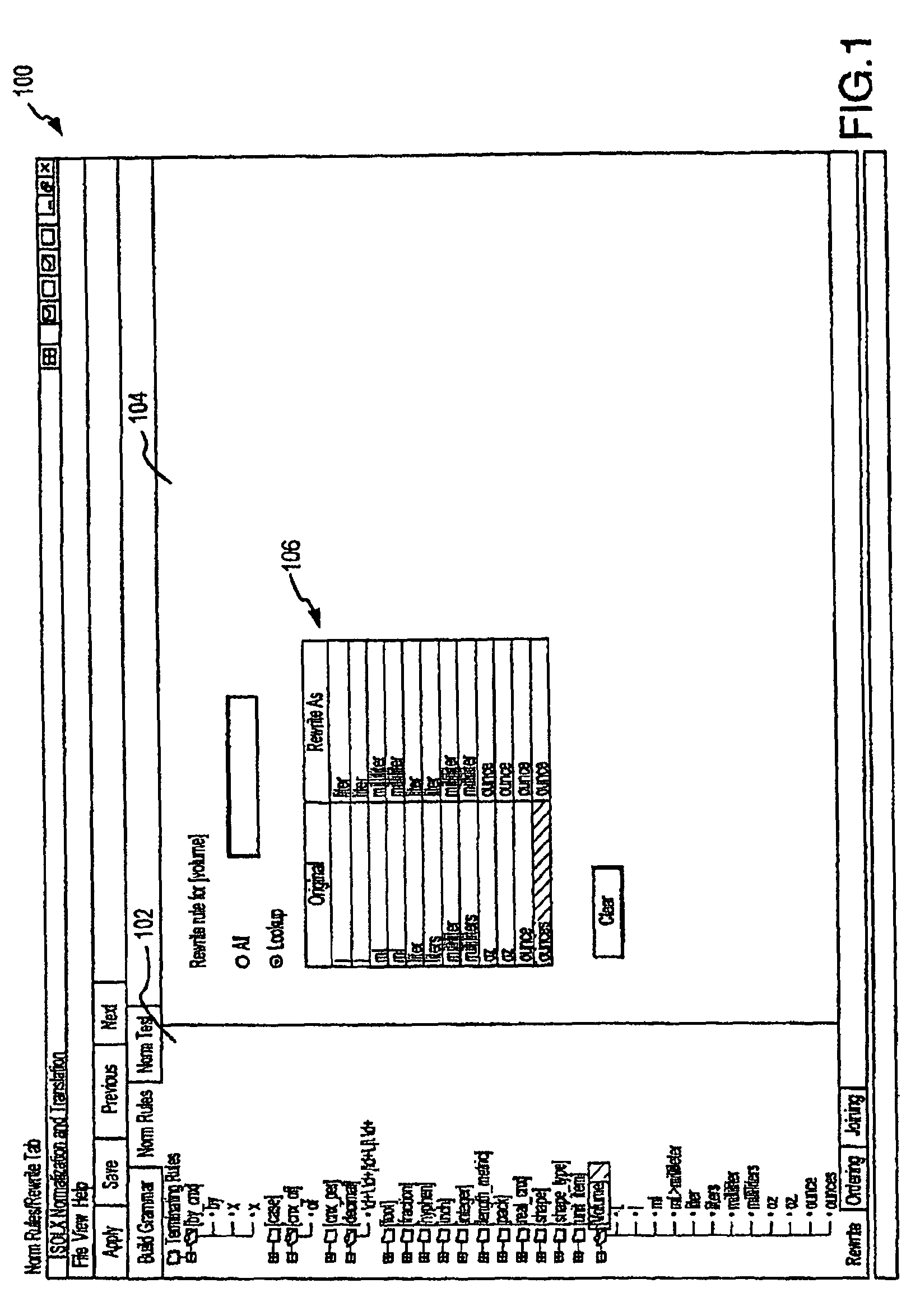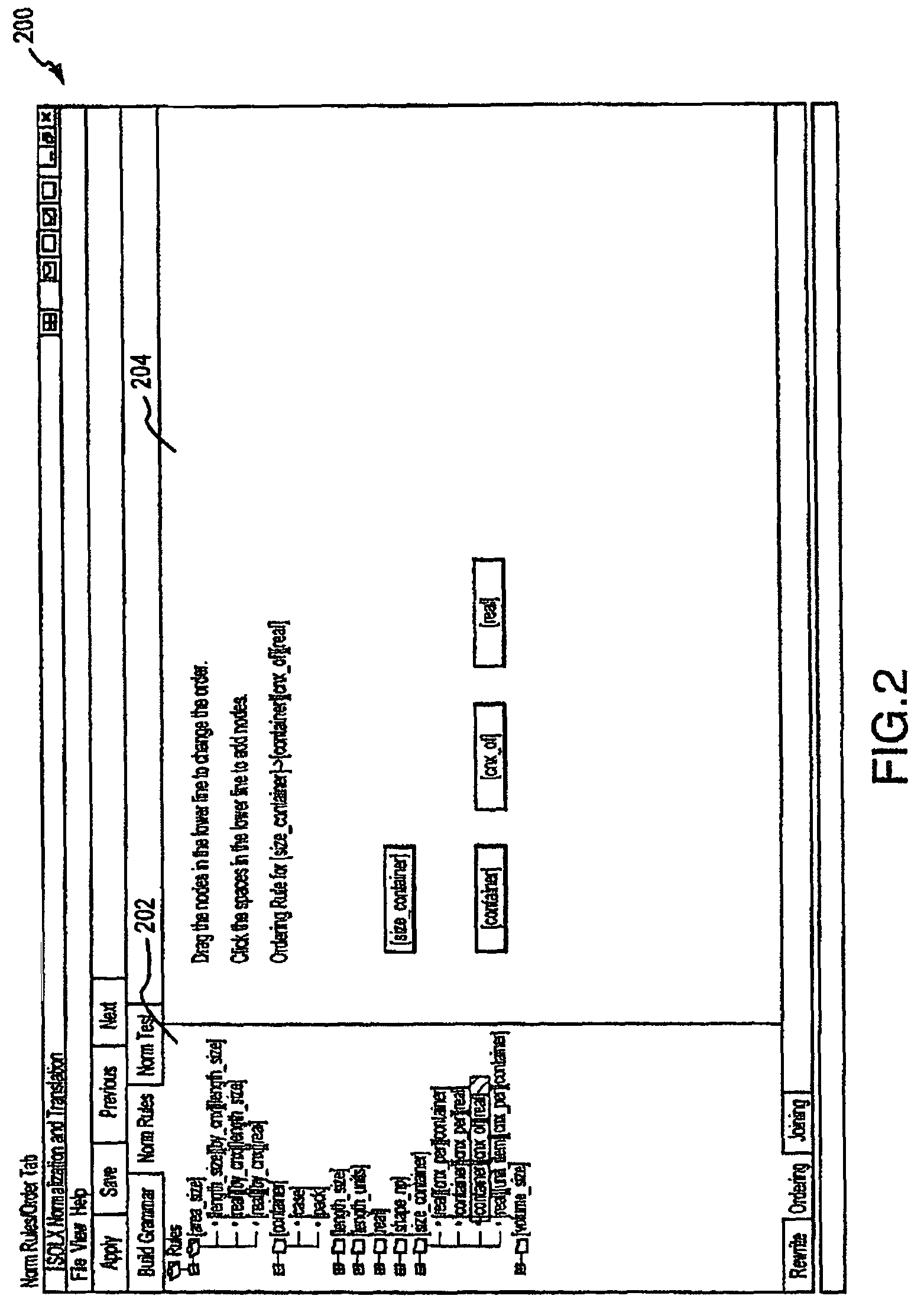Subject matter context search engine
a search engine and subject matter technology, applied in the field of search systems, can solve the problems of failed search, product categories may not be obvious or not the most convenient way, and customers wishing to purchase post-it notes may not be able to readily identify, so as to increase the likelihood of yielding useful results
- Summary
- Abstract
- Description
- Claims
- Application Information
AI Technical Summary
Benefits of technology
Problems solved by technology
Method used
Image
Examples
Embodiment Construction
[0044]In the following description, the invention is set forth in the context of a search system involving standardization of source and search terms, and the association of classification information with both source terms and search terms. Specific examples are provided in the environment of business information, e.g., searching a website or electronic catalog for products of interest. Although this particular implementation of the invention and this application environment is useful for illustrating the various aspects of the invention, it will be appreciated that the invention is more broadly applicable to a variety of application environments and searching functions. In particular, various aspects of the invention as set forth above may be beneficially used independent of others of these aspects and are not limited to combinative uses as set forth in the discussion that follows.
[0045]The discussion below begins by describing, at a functional and system component level, a search...
PUM
 Login to View More
Login to View More Abstract
Description
Claims
Application Information
 Login to View More
Login to View More - R&D
- Intellectual Property
- Life Sciences
- Materials
- Tech Scout
- Unparalleled Data Quality
- Higher Quality Content
- 60% Fewer Hallucinations
Browse by: Latest US Patents, China's latest patents, Technical Efficacy Thesaurus, Application Domain, Technology Topic, Popular Technical Reports.
© 2025 PatSnap. All rights reserved.Legal|Privacy policy|Modern Slavery Act Transparency Statement|Sitemap|About US| Contact US: help@patsnap.com



